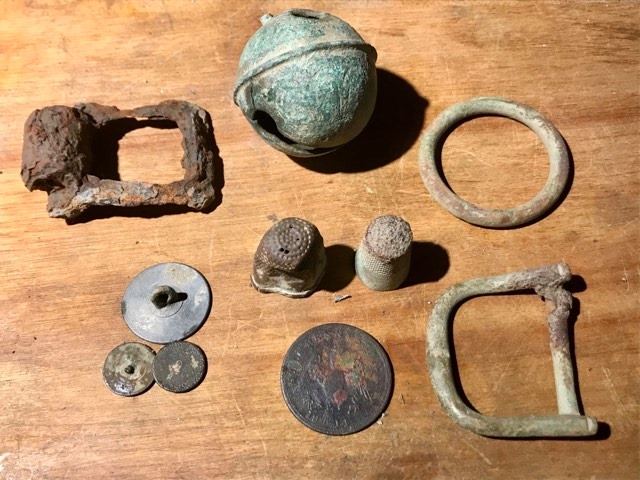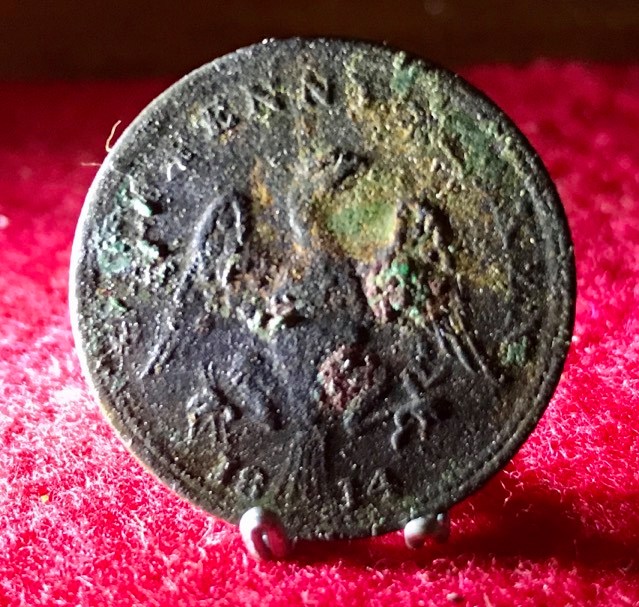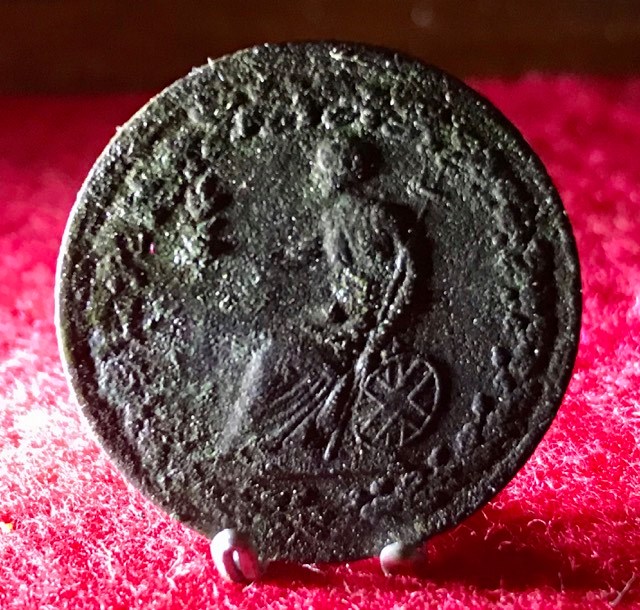Navigation
Install the app
How to install the app on iOS
Follow along with the video below to see how to install our site as a web app on your home screen.
Note: This feature may not be available in some browsers.
More options
You are using an out of date browser. It may not display this or other websites correctly.
You should upgrade or use an alternative browser.
You should upgrade or use an alternative browser.
token 1814.
- Thread starter GuyToken
- Start date
- Oct 26, 2004
- 24,665
- 24,501
- 🏆 Honorable Mentions:
- 2
- Detector(s) used
- Minelab Explorer
- Primary Interest:
- Shipwrecks
The reverse reminds me of a Canadian half-penny token.
Don......
Don......
Last edited:
- Oct 26, 2004
- 24,665
- 24,501
- 🏆 Honorable Mentions:
- 2
- Detector(s) used
- Minelab Explorer
- Primary Interest:
- Shipwrecks
As shown here: Steve's Coins - Canadian Tokens
or still better, here: https://www.ebay.com/i/273768325067...86i9dY44OGn6d-jJ2nGSXF7b9KeZr-GhoCYBEQAvD_BwE
Don....
or still better, here: https://www.ebay.com/i/273768325067...86i9dY44OGn6d-jJ2nGSXF7b9KeZr-GhoCYBEQAvD_BwE
Don....
Last edited:
As an eBay Associate we earn from qualifying purchases.
- Feb 3, 2009
- 41,160
- 157,179
- 🥇 Banner finds
- 1
- Detector(s) used
- Deus, Deus 2, Minelab 3030, E-Trac,
- Primary Interest:
- Relic Hunting
Nice going on the token Guy.
There has been a few of these posted lately.
Like it states in MacKaydon link it wasn't a popular issue and one would have to the wonder what the powers to be were thinking when the design was approved.
There has been a few of these posted lately.
Like it states in MacKaydon link it wasn't a popular issue and one would have to the wonder what the powers to be were thinking when the design was approved.
Red-Coat
Gold Member
Nice going on the token Guy.
There has been a few of these posted lately.
Like it states in MacKaydon link it wasn't a popular issue and one would have to the wonder what the powers to be were thinking when the design was approved.
These spread eagle tokens weren’t officially approved though. They were privately issued by an American merchant called Nye from Phillipsburg NJ, who had established a trading relationship out of Boston into Montreal, where he then re-located. With the encouragement and support of other merchants, he privately funded the issue of these tokens to alleviate the desperate shortage of small denomination coins. The British government had themselves done little to address the problem beyond sending occasional consignments of very worn coins that had been withdrawn from circulation in Britain.
The use of the ‘American’ eagle together with Britannia as design elements was Nye’s choice and initially not well-received in all areas, given the War of 1812 had just ended. It’s incorrectly reported in some sources that these pieces were overstruck on tokens originally issued by the Bristol merchant Samuel Guppy.
Nye’s tokens were issued between 1813-1815 with those dates, but imitations of them were re-issued between 1825-1837 using dies with the original 1813-1815 dates. The later imitations were ‘light-weighted’. Both types (of halfpenny) had a diameter of 28mm but the originals weighed 8.8g versus 6g for the later imitations.
There are other differences too, such as whether or not the date is divided by the tail feathers of the eagle and the size of lettering.
Last edited:
Professor of Engineering
Gold Member
Very cool token, congrats! 

The reverse reminds me of a Canadian half-penny token.
Don......
The reverse reminds me of an old lady in a wheel chair holding a crutch.
 Gary
Gary- Feb 3, 2009
- 41,160
- 157,179
- 🥇 Banner finds
- 1
- Detector(s) used
- Deus, Deus 2, Minelab 3030, E-Trac,
- Primary Interest:
- Relic Hunting
The reverse reminds me of an old lady in a wheel chair holding a crutch.Gary
Never saw her in that light.

Actually I didn't realize that she has been around for some time.
https://en.wikipedia.org/wiki/Britannia
CRUSADER
Gold Member
Nice amount of info on that.These spread eagle tokens weren’t officially approved though. They were privately issued by an American merchant called Nye from Phillipsburg NJ, who had established a trading relationship out of Boston into Montreal, where he then re-located. With the encouragement and support of other merchants, he privately funded the issue of these tokens to alleviate the desperate shortage of small denomination coins. The British government had themselves done little to address the problem beyond sending occasional consignments of very worn coins that had been withdrawn from circulation in Britain.
The use of the ‘American’ eagle together with Britannia as design elements was Nye’s choice and initially not well-received in all areas, given the War of 1812 had just ended. It’s incorrectly reported in some sources that these pieces were overstruck on tokens originally issued by the Bristol merchant Samuel Guppy.
Nye’s tokens were issued between 1813-1815 with those dates, but imitations of them were re-issued between 1825-1837 using dies with the original 1813-1815 dates. The later imitations were ‘light-weighted’. Both types (of halfpenny) had a diameter of 28mm but the originals weighed 8.8g versus 6g for the later imitations.
There are other differences too, such as whether or not the date is divided by the tail feathers of the eagle and the size of lettering.
Interesting - thanks
JeffInMass
Silver Member
- Jan 14, 2006
- 4,726
- 7,183
- Detector(s) used
- Minelab Manticore, Minelab Equinox 600, Minelab Explorer SE Pro, Explorer XS, Fisher CZ6A
- Primary Interest:
- Metal Detecting
Very nice finds, Congrats monsieur..
Users who are viewing this thread
Total: 2 (members: 0, guests: 2)








